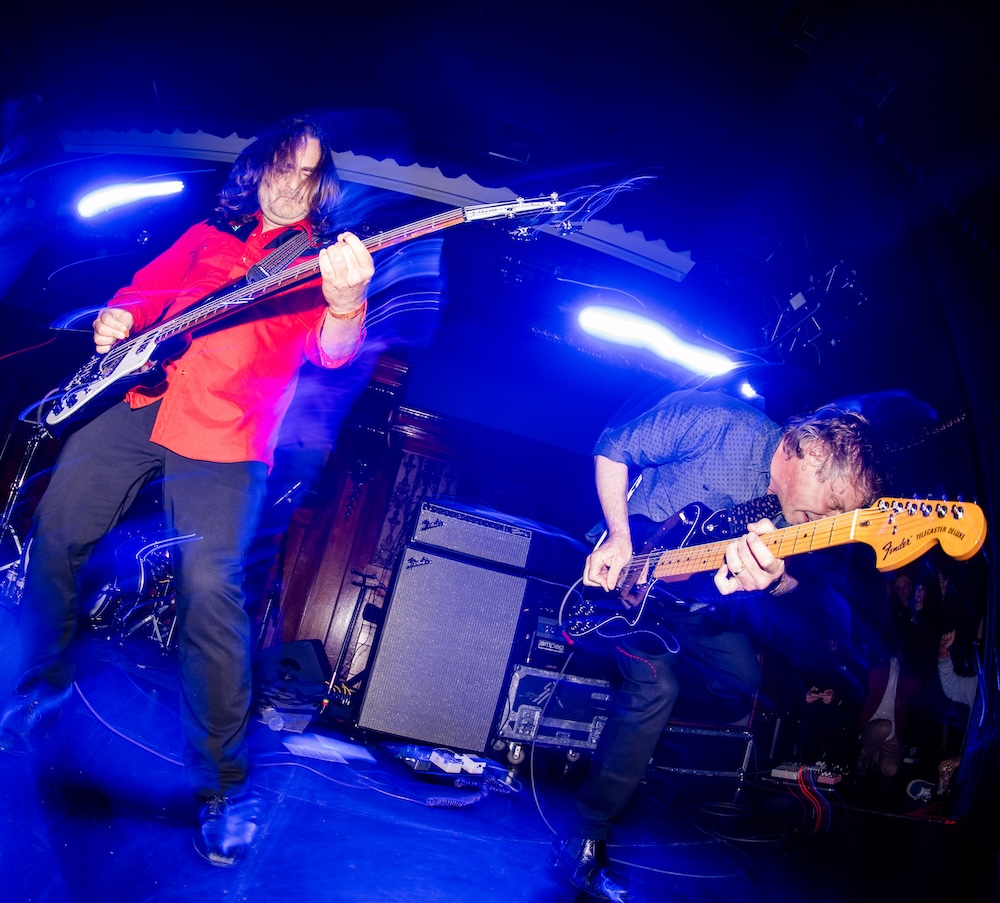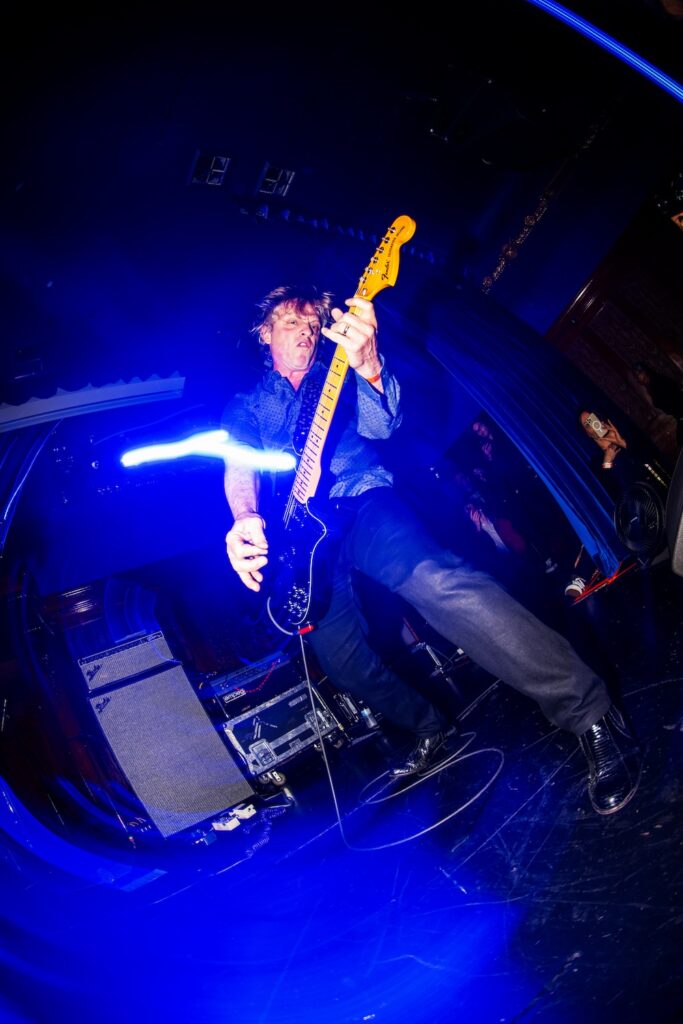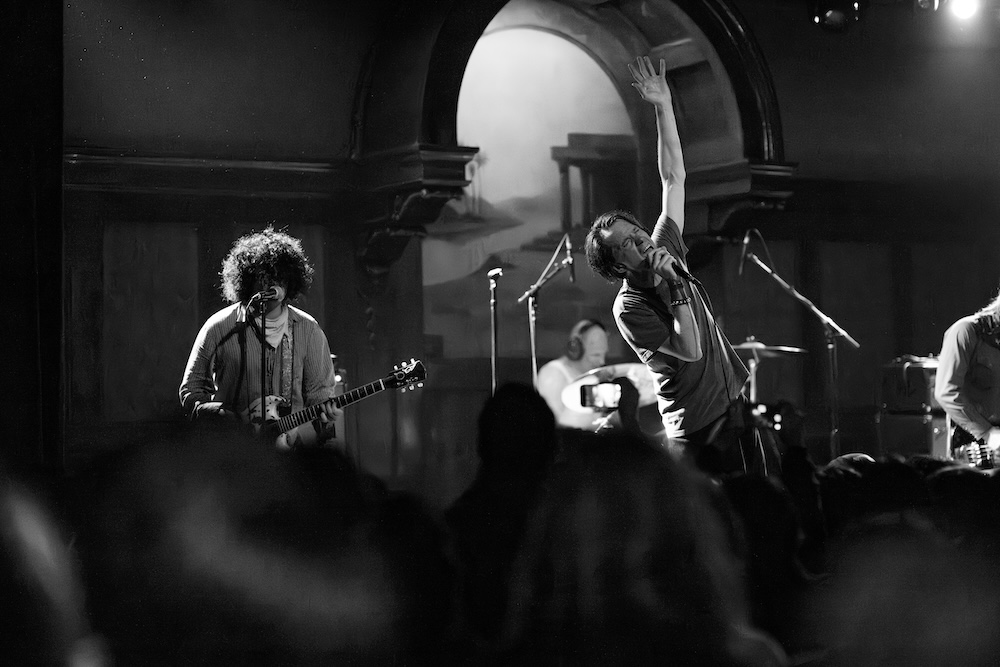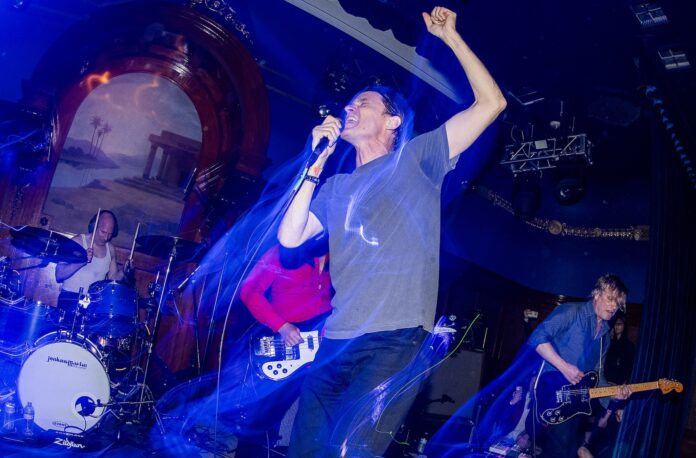For the past 30 years, Portraits of Past has been a touchstone in the evolution of hardcore. The group’s discography—anchored by a single full-length album and EP—may be abbreviated, but it continues to resonate with new generations of screamo and post-hardcore musicians and fans alike.
Long before they were labeled a legendary hardcore band, they were just a group of teenage friends from the Bay Area—skateboarding after school, obsessing over Metallica tapes, and hauling gear into garages. They made regular pilgrimages to Berkeley’s 924 Gilman Street, ground zero for the ‘90s punk revival, where groups played with a raw conviction that made the impossible feel within reach.
“We all always thought we would start a band,” says guitarist Rex Shelverton. “When we first went to Gilman, it was like, ‘Oh, cool.’ I just assumed we’d be playing there in a few years.”
That assumption turned out to be right. And now, decades after the Bay Area five-piece’s short-but-seismic run in the ’90s, they are returning—older, wiser, but still chasing the same raw feeling that first yanked them onto the stage.

For starters, they are reissuing their 1996 self-titled LP on vinyl, performing songs from 2009’s Cypress Dust Witch live for the first time, and releasing a powerful new cover of influential D.C. hardcore band Rites of Spring’s “For Want Of.”
They’re also touring again for the first time in 15 years, and bringing their raw power to San Francisco’s Great American Music Hall on Sat/31.
Portraits of Past’s story starts just south of the city in the tight-knit coastal town of Half Moon Bay, where Shelverton and vocalist Rob Pettersen grew up bonding over music that gave shape to adolescent alienation.
“Just as soon as we got into music in our middle-school years and then high-school years,” Pettersen says, “being able to see it and see that normal people play punk music or just regular people get up there and do it… we were super inspired.”
Their early influences were eclectic—Fugazi, Black Flag, Suicidal Tendencies, and Metallica—and grounded in the fierce independence of the Bay Area underground. Shelverton remembers shows at San Francisco’s Epicenter and the empowering ethos of Gilman Street.
“It felt like, ‘Oh, this is just what you do if you’re into this music,’” says Shelverton. “You make it, too. It seemed so DIY that it was weird not to be in a band.”

While the results of their musical career may have been happenstance, the band had a vision.
“We always liked Fugazi’s idea of what you can do with just a guitar plugged into an amp,” Shelverton says. “But even though we wanted to make soundscapes… we didn’t use alternate tunings besides just tuning down. So a lot of things were accidental. But the sound itself was deliberate.”
Drawing on the impressionistic chaos of Heroin, the blunt force of Econochrist, and the droning weirdness of Sonic Youth, they created something singular. It was visceral and unpolished, but with a strange lyrical core. This emotive, unpredictable mix of hardcore aggression and melodic experimentation would later become foundational to what people now call screamo.
Portraits of Past emerged during a fertile time for Bay Area punk. Bands like Jawbreaker and Mohinder were carving out intense local followings, while Rancid and Green Day were still playing to half-empty rooms.
Pettersen remembers those early Gilman shows vividly. “I saw Rancid’s second show at Gilman where they played to like 10 people,” says the vocalist.
But Portraits of Past never felt aligned with the more visible wave of local punk.
“We would have put ourselves in that scene where it was a little bit more melodic and less straightforward,” Shelverton says.
Pettersen recalls booking the band’s 1995 US tour using a Maximum Rocknroll subzine called Book Your Own Fucking Life, a white pages of promoters who organize DIY, often house or alternative-space shows across the country.
“Not to say the tour went well or was smooth or easy… but making it happen was doable because of that DIY infrastructure and Maximum Rocknroll,” says Pettersen. ”Ebullition Records helped open doors for us.”
Their self-titled LP, released in 1996 by Ebullition Records, became a cult classic, though it was released after the band had already called it quits.
Each member remembers the reasons behind their breakup differently. Shelverton recalls trying to write new material that never sounded quite right. Pettersen blames himself, saying that he wasn’t progressing as quickly as his bandmates and that touring just wasn’t fun for him anymore.
Despite the modest scale of their original run, Portraits of Past’s influence only grew.
“It was a shock when we heard, in the early 2000s, that people were discovering the album, and it was speaking to them,” Shelverton says.

The LP was also showing up in unexpected places, like the soundtrack of gritty dance parties across the country, alongside LCD Soundsystem, The Strokes, and Peaches.
“I remember moving to New York in 2004 and hearing, ‘Oh, there’s a weird, grimy club night where they play your band sometimes,’” says Pettersen. “Why would anyone play our music at a dance night in the Lower East Side?”
A brief reunion in 2008 yielded a few shows and the Cypress Dust Witch EP, but 2025 marks the band’s first extended return. After their San Francisco date, they have shows booked across the country through the end of August.
Beyond that, they’re keeping their options open.
“As far as the future, it’s just awesome that we’re playing together,” Pettersen says. “But I am not interested in being an oldies act … Of course, Portraits of Past was always about evolution in my mind, or at least personal growth that comes out through music.”
Their new cover of “For Want Of” offers a clue to that progression. “It was a little chance for us to get into the studio,” adds the singer. “To figure out what Portraits of Past sound like in 2025, and maybe what future recordings could sound like.”
At one point, Shelverton assumed they’d already done everything they could, but now he’s optimistic about what’s to come.
“We did this cool thing, and I didn’t know if we could push this any further than we did,” he says.”But now I’m excited about doing more stuff.”
What started as a circle of friends skating around town and moshing in circle pits has evolved into a story of influence and rediscovery. What’s more, it’s no longer a tale trapped in the past—it’s risen, alive, and kicking once again.
PORTRAITS OF PAST Sat/31. Great American Music Hall. Tickets and more info here.





